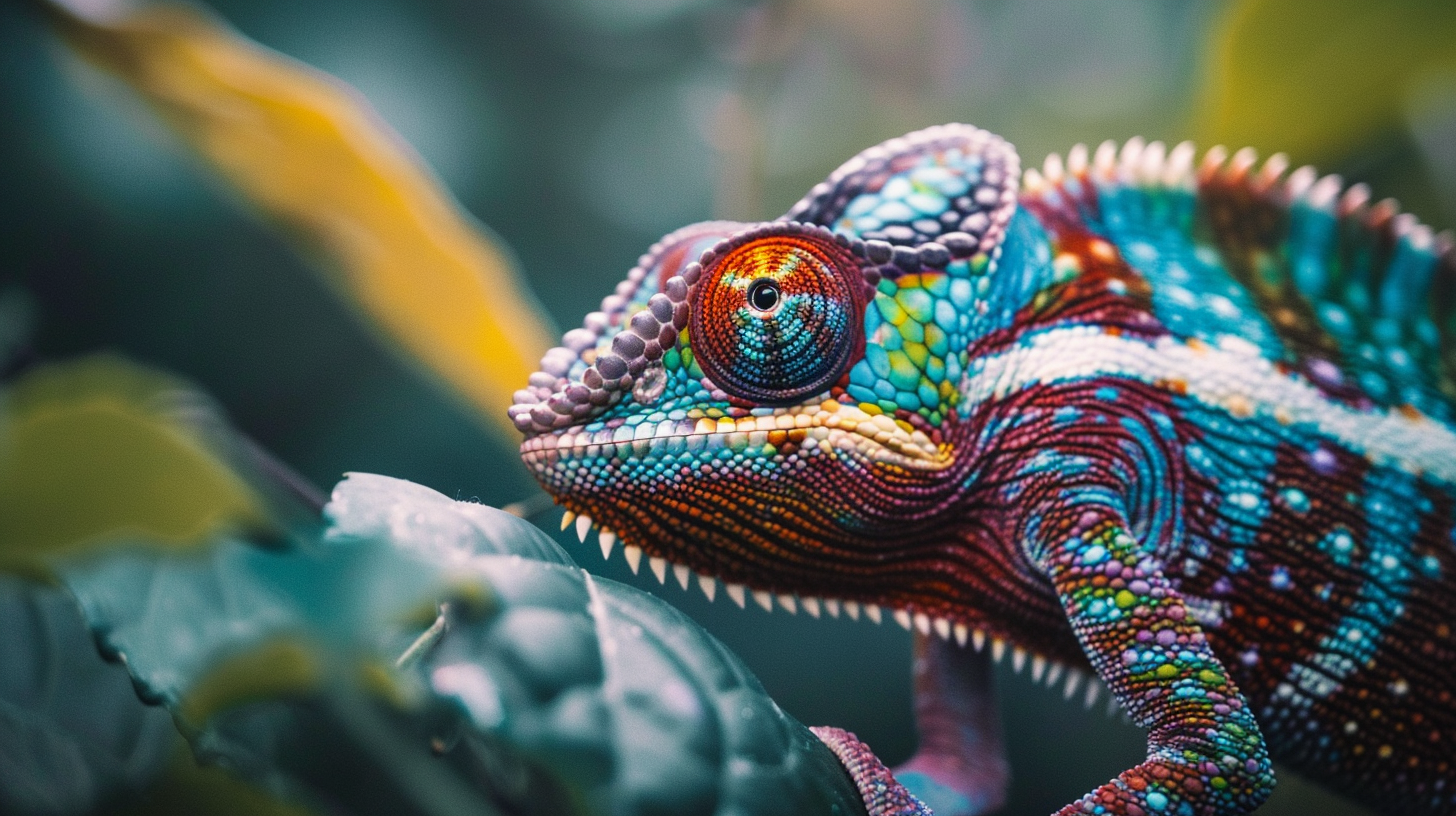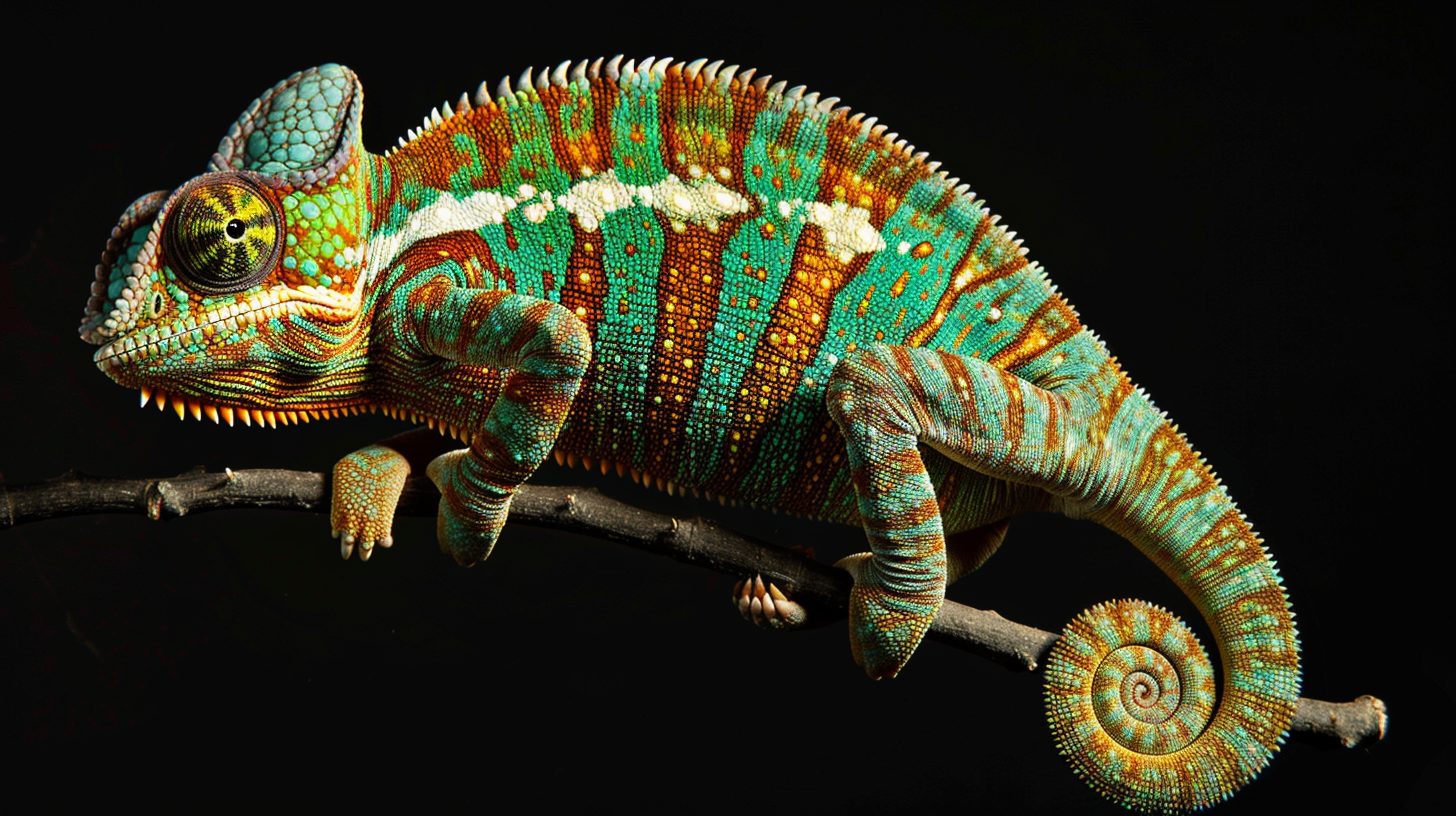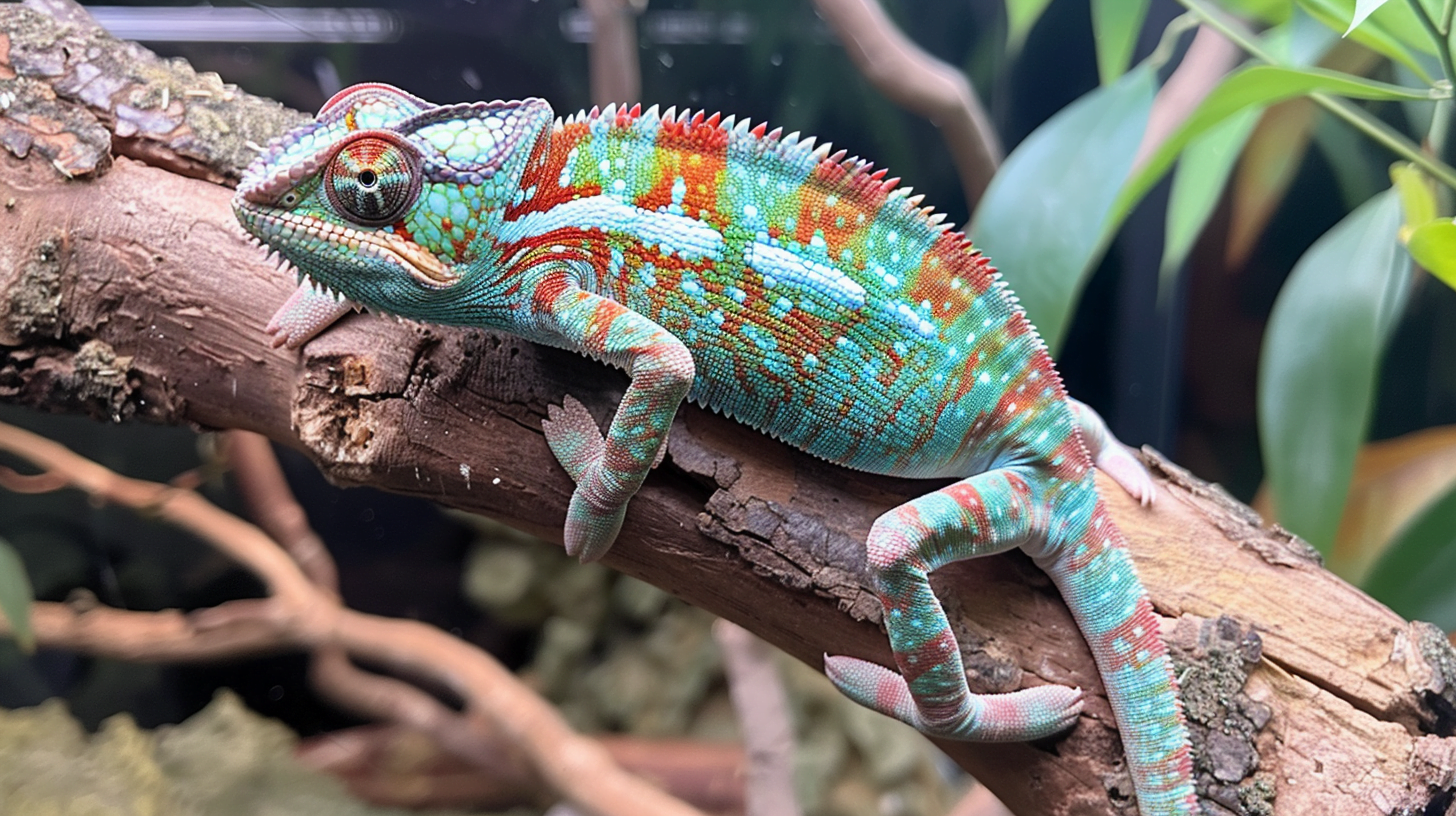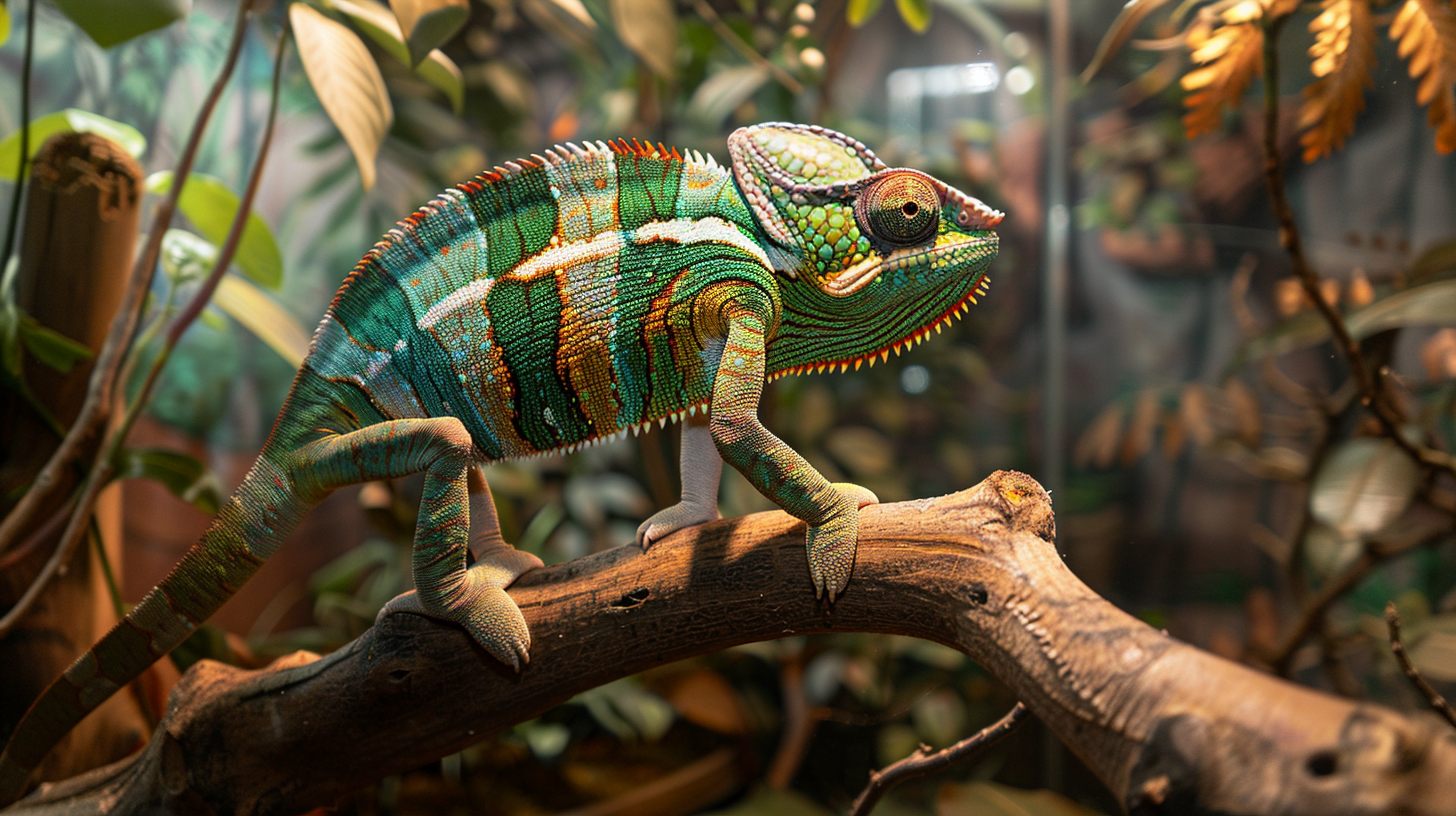Introduction
Chameleons, with their mesmerizing color-changing abilities and unique physical traits, have long fascinated both scientists and nature enthusiasts. However, the question arises: Are chameleons endangered? This article delves into the conservation status of chameleons, exploring the factors contributing to their endangerment, specific species at risk, and the efforts being made to protect these remarkable reptiles.
Understanding Chameleons
What Are Chameleons?
Chameleons are a distinctive and highly specialized group of lizards known for their ability to change color, independently move their eyes, and capture prey with their long, sticky tongues. These reptiles belong to the family Chamaeleonidae and are primarily found in Africa, Madagascar, southern Europe, and parts of Asia.
Types of Chameleons
There are approximately 200 species of chameleons, each with unique characteristics and habitats. Some of the most well-known species include:
- Panther Chameleon (Furcifer pardalis): Native to Madagascar, known for its vibrant colors.
- Parson’s Chameleon (Calumma parsonii): One of the largest chameleons, also found in Madagascar.
- Pygmy Chameleon (Rhampholeon spp.): Small, ground-dwelling chameleons found in Africa.
Conservation Status of Chameleons
Current Status
The International Union for Conservation of Nature (IUCN) Red List is a critical resource for understanding the conservation status of various species. According to the IUCN, several chameleon species are listed as endangered or vulnerable. For instance, the Tarzan Chameleon (Calumma tarzan) is critically endangered due to habitat loss and fragmentation.
Factors Contributing to Endangerment
Several factors contribute to the endangerment of chameleons:
- Habitat Loss and Deforestation: The destruction of forests for agriculture, logging, and urban development significantly reduces the natural habitats of chameleons.
- Climate Change: Alterations in temperature and weather patterns can disrupt the delicate ecosystems that chameleons depend on.
- Illegal Pet Trade: The demand for exotic pets leads to the illegal capture and trade of chameleons, further threatening their populations.
- Pollution and Pesticides: Chemicals used in agriculture can contaminate the habitats of chameleons, affecting their health and survival.
Specific Endangered Chameleon Species
Panther Chameleon
The Panther Chameleon, native to Madagascar, is renowned for its striking colors. However, habitat destruction and the pet trade pose significant threats to its survival. Conservation efforts focus on habitat protection and regulating the pet trade to ensure sustainable populations.
Parson’s Chameleon
Parson’s Chameleon, one of the largest chameleon species, faces threats from deforestation and habitat fragmentation. Conservationists are working to protect its natural habitats and promote sustainable land-use practices.
Pygmy Chameleon
Pygmy Chameleons, found in the forests of Africa, are particularly vulnerable to habitat loss. Conservation initiatives aim to preserve their habitats and raise awareness about the importance of these small but vital creatures.
Conservation Efforts and Initiatives
International Efforts
Several international organizations are dedicated to chameleon conservation:
- CITES (Convention on International Trade in Endangered Species): Regulates the international trade of chameleons to prevent over-exploitation.
- Global Conservation Organizations: Groups like the World Wildlife Fund (WWF) and Conservation International work to protect chameleon habitats and promote sustainable practices.
Local and Regional Efforts
Community-based conservation programs play a crucial role in protecting chameleons. For example, local communities in Madagascar are involved in reforestation projects and sustainable land management to preserve chameleon habitats.
Captive Breeding Programs
Captive breeding programs are essential for the conservation of endangered chameleon species. These programs aim to breed chameleons in controlled environments and reintroduce them into the wild. Successful examples include the breeding of the Jackson’s Chameleon (Trioceros jacksonii) in captivity to bolster wild populations.
How You Can Help
Supporting Conservation Organizations
You can support chameleon conservation by donating to reputable organizations. Some notable ones include:
- World Wildlife Fund (WWF)
- Conservation International
- Chameleon Conservation Initiative
Responsible Pet Ownership
If you are considering keeping a chameleon as a pet, it’s essential to do so responsibly. Ensure that the chameleon is captive-bred and not taken from the wild. Provide proper care, including a suitable habitat, diet, and veterinary care.
Raising Awareness
Raising awareness about the plight of chameleons can make a significant difference. Use social media and other platforms to share information and educate others about the importance of chameleon conservation.
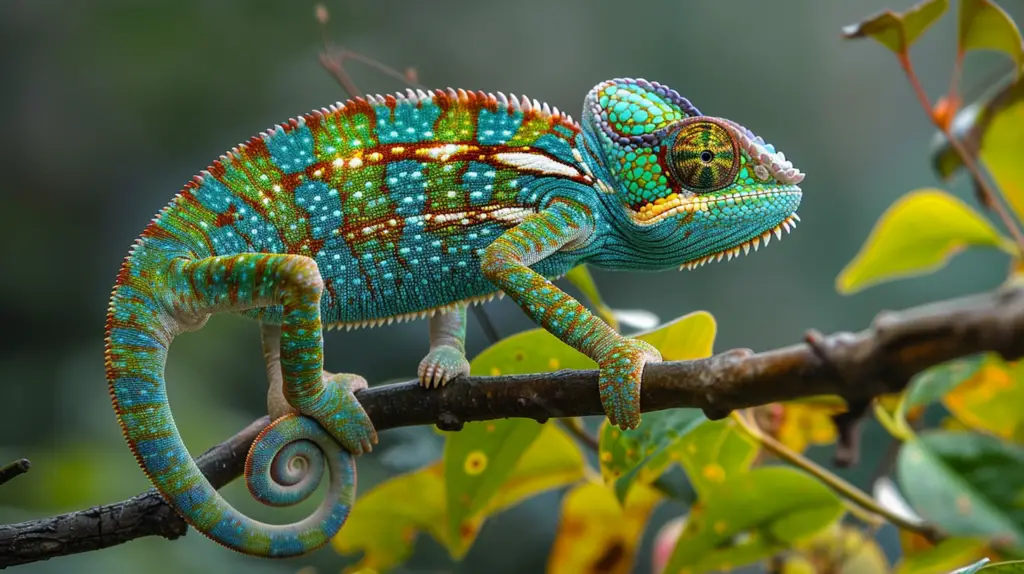
Frequently Asked Questions About Chameleons and Their Conservation
General Questions
How many species of chameleons are there?
There are approximately 200 species of chameleons, each with unique characteristics and habitats.
Where do chameleons live?
Chameleons are primarily found in Africa, Madagascar, southern Europe, and parts of Asia.
What do chameleons eat?
Chameleons primarily eat insects, but larger species may also consume small birds and reptiles.
Conservation-Specific Questions
Why are chameleons endangered?
Chameleons are endangered due to habitat loss, climate change, illegal pet trade, and pollution.
What is being done to protect chameleons?
Conservation efforts include habitat protection, captive breeding programs, and regulations on the pet trade.
How can I help save chameleons?
You can help by supporting conservation organizations, practicing responsible pet ownership, and raising awareness about chameleon conservation.
Conclusion
In summary, chameleons face numerous threats that put their survival at risk. However, through concerted conservation efforts and increased awareness, we can help protect these fascinating reptiles. By supporting conservation organizations, practicing responsible pet ownership, and spreading the word, you can make a difference in the fight to save chameleons.
